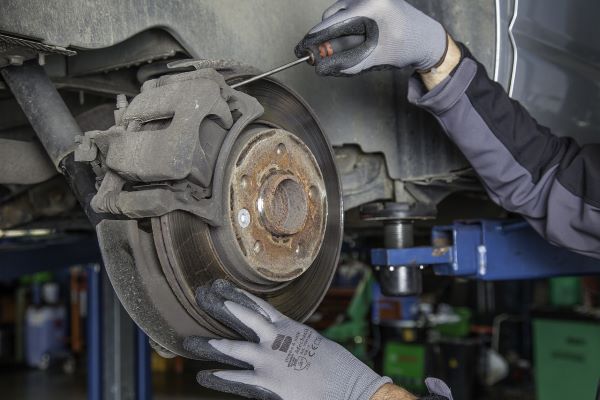In case you missed it see what’s in this section
Let's Talk

Your Ultimate Guide to Brake Pads
When it comes to the safety of your vehicle, one component stands out in importance—brake pads. These vital elements play a crucial role in ensuring your vehicle comes to a halt smoothly and swiftly. Understanding the fundamentals of brake pads, including their lifespan, selection criteria, and replacement process, is essential for every responsible vehicle owner.
How Often Should I Change My Brake Pads?
The lifespan of brake pads primarily depends on various factors, such as your driving habits, road conditions, and the type of pads you have installed. On average, they tend to last between 30,000 and 70,000 miles. However, it is crucial to keep an eye out for certain warning signs indicating that it may be time to replace your brake pads.
One telltale sign of worn-out brake pads is the presence of squealing or screeching noises when applying the brakes. This noise is caused by a wear indicator, a small metal tab embedded within the pad, which makes contact with the rotor when the pad thickness becomes critically low.
Additionally, if you notice reduced braking performance or a longer stopping distance, it may be an indication that your brake pads are nearing the end of their life. Regular visual inspections can also help you identify thinning pads, which are typically less than a quarter-inch thick.
How Do I Choose The Right Brake Pads?
Selecting the appropriate brake pads for your vehicle is crucial to ensuring optimal braking performance and longevity. Consider the following factors when making your choice:
- Pad Material: Brake pads are commonly made from three materials: organic, semimetallic, and ceramic. Organic ones are affordable and offer a quieter operation, but may wear out faster. Semimetallic ones provide excellent heat dissipation and durability, making them suitable for heavy-duty applications. Ceramic ones offer reduced noise, longer lifespan, and consistent performance, but are generally more expensive.
- Driving Style: Your driving habits play a significant role in determining the ideal brake pads for your vehicle. If you frequently engage in aggressive driving or towing heavy loads, opt for those with high-performance capabilities.
- Vehicle Type: Different items are designed for various vehicle types. Ensure you choose pads specifically formulated for your vehicle's make and model to achieve optimal compatibility and performance. Consult your vehicle manufacturer's recommendations or seek advice from a trusted mechanic.
- Budget: While it's tempting to choose the most affordable option, compromising on quality can have serious consequences for your safety. Strike a balance between cost and quality by opting for reputable brake pad brands that offer a good value proposition.
How Do I Change My Brake Pads?
If you have moderate mechanical skills, changing brake pads can be a rewarding DIY project. However, if you're unsure about your abilities, it is recommended that you seek professional assistance. Here's a general overview of the replacement process:
- Prepare: Gather the necessary tools, including a lug wrench, C-clamp, jack, and jack stands. Park your vehicle on a level surface and engage the parking brake for added safety.
- Remove the Wheel: Loosen the lug nuts while the vehicle is still on the ground. Lift the vehicle with the jack and secure it with jack stands. Finish removing the lug nuts and carefully remove the wheel.
- Remove the Brake Caliper: Locate the caliper, which is typically held in place by bolts or pins. Remove these fasteners, then carefully detach the caliper from the rotor. Use a bungee cord or wire to support the caliper and prevent unnecessary strain on the brake hose.
- Replace the Brake Pads: With the caliper removed, you can access the details. Remove the old details and inspect the caliper and rotor for any signs of damage or excessive wear. Install the new pads, ensuring they fit snugly into place.
- Reassemble: Before reattaching the caliper, compress the caliper piston using a C-clamp to make room for the new pads. Once compressed, position the caliper back over the rotor and secure it with the bolts or pins.
- Finalize: Reinstall the wheel and tighten the lug nuts in a star pattern. Lower the vehicle from the jack stands and torque the lug nuts to the manufacturer's specifications. Repeat the process for the remaining wheels.
Remember, when it comes to your safety, never compromise. Maintain your brake pads with care and prioritize regular inspections and replacements as necessary.
Sources:
Information about brake pads taken from the site onlinecarparts.co.uk
Weather in Bristol
Listings















